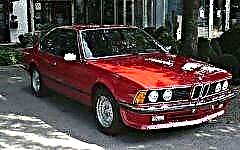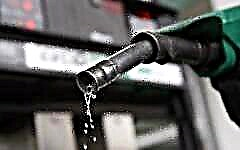

The content of the article:
- The two most important rules
- Speed
- Do not get under way from the start
- Insulation for the motor
- Spark plug condition
- Tire selection
- Fuel selection
- Controversial ways to save
Fuel economy remains an urgent problem for both motorists and manufacturers, despite the season. How to avoid overconsumption of fuel in winter, is it possible to save money, and what myths surround motorists who are seriously concerned about keeping the budget?
The two most important rules

The main rule of fuel economy regardless of the season is timely diagnose a car and monitor the health of the fuel system sensors... Correct signaling determines the amount of fuel that is supplied to each cylinder. Any failure in the operation of the electronic device will affect the amount of fuel supplied in the direction of its increase.
The second important point is the condition of the oil. If you do not change the oil in accordance with the technical regulations, then there is an increase in friction between the running parts of the motor. Shafts and pistons consume more energy when cornering in a viscous environment, which increases fuel consumption.
Speed

Consumption directly depends on speed. On city streets, with frequent traffic jams, it is impossible to save money, but when entering the highway, it is quite. Least of all the car consumes fuel, using high gear at speeds of 80 km per hour, without stopping and idling.
Do not get under way from the start
A cold engine always uses more fuel. Cold air is supplied to the cylinders, the oil loses its fluidity. As a result, the sensor signals a higher concentration of the fuel mixture required for ignition.
All drivers warm up the engine in cold weather before starting, which also does not bring savings. On average, for each warm-up of the engine in the morning, it leaves from 0.2 liters. fuel. But when driving from the start, less fuel is consumed than when warming up in the morning.
Many manufacturers recommend not to warm up the engine before starting, but to get under way right away, but this is dubious advice. Modern cars, although they have a fully automatic fuel supply system and do not need to use a suction, the chassis does not receive sufficient lubrication at the start. Cylinders and pistons, operating with minimal lubrication, deteriorate faster, and imaginary fuel economy in winter can turn into a major overhaul in summer.
Insulation for the motor

Ideally, so that fuel consumption in winter does not exceed this figure in summer, the engine should not be cooled to more than ten degrees Celsius. It is almost impossible to achieve this without a warm garage, but there is an optimal solution not to let the motor cool down in 4-5 hours - this is the “Avtoteplo” motor heater.
We put a synthetic pillow on the engine under the hood. If the air temperature is kept at -15, the blanket will keep the motor hot for up to six hours. In urban operation, with frequent stops, exits, the engine will not have to warm up for half an hour at all. This measure will bring fuel savings of up to 20%.
You should buy Avtoteplo only from trusted manufacturers. The blanket should be made of refractory synthetic winterizer and glass wool; asbestos threads are used as accessories. The fiber does not support combustion and does not smolder at 1200 degrees. For each brand, manufacturers offer a separate assortment of insulation, which coincides in shape with the engine compartment.
Spark plug condition

Serviceable spark plugs will help you save gas. Old or karst electrodes do not hold a constant spark and the mixture will intermittently ignite. This increases the consumption of gasoline by 10-15%. The myth is that plugs should not be replaced as they wear out, but the more often, the better, there will be greater fuel economy.
Tire selection

Choosing the right tires will really help you save on fuel in winter, but not about 15%. Decreased tire pressure increases fuel consumption and quickly wears out the tread. In addition, the chassis of the car is experiencing increased stress.
It is a big misconception that some drivers believe that if you increase the tire pressure above the permissible level by 5-10%, it will help to save a significant amount of fuel. When the pressure rises, the driver is not waiting for fuel economy, but the likelihood of depressurization, rapid tread wear and poor car handling when cornering, and for winter this is the worst scenario.
Fuel selection

This is one of the main criteria that will help to really reduce fuel consumption on an injection engine. A sufficiently rich mixture will shorten the injection time.
The oxygen sensor monitors the composition of the mixture and sends a signal to the ECU, the opening time of the fuel injector is reduced. On the contrary, with a lean mixture, the opening time increases, and this leads to an excessive consumption of fuel by an average of 15-20%.
The opinion that low-sulfur (refined) Euro-4 gasoline gives low consumption is also a big exaggeration. In fact, using refined gasoline will only help extend the life of the fuel system.
In this case, the main point should be taken into account - what class of fuel the engine is designed for. If for gasoline A-95, then the use of A-98 in the expectation that fuel with a high octane number is "more useful", will lead to rapid wear of pistons and cylinders without any reduction in quantity.
Controversial ways to save
Common methods that will definitely not bring any savings are the use of additives, chip tuning and the purchase of "exclusive fuel saving devices" powered by a cigarette lighter.
Additives

In modern cars, only the ECU dosages the fuel mixture and determines the injection time based on the readings of sensors that monitor the amount of oxygen and the quality of combustion. Therefore, no additives will affect the operation of the electronic control unit.
Additives will help remove excess moisture from the gas tank, clean the nozzles by 10-20%, but there is no talk of any fuel savings, especially in winter.
Fuel saving device

Unique devices that are sold on the market for 700-2000 rubles, powered by a cigarette lighter and promising fuel savings of 20-30% - this is an ordinary deception... Electric vehicle manufacturers are installing a regenerative braking system that increases the efficiency of the motor when coasting - this helps to reduce fuel consumption on hybrid versions of electric vehicles. No device connected autonomously can provide such savings.
Chip tuning

Re-flashing the ECU when the engine gets lean does indeed bring about 10% fuel savings. The cost of chip tuning ranges from 3,000 to 15,000 rubles.
However, to save fuel, the motorist gets a slow reaction of the car to depressing the gas pedal, the inability to make a sharp start and braking. At the same time, you should maintain a stable average speed with smooth starts and smooth stops.











